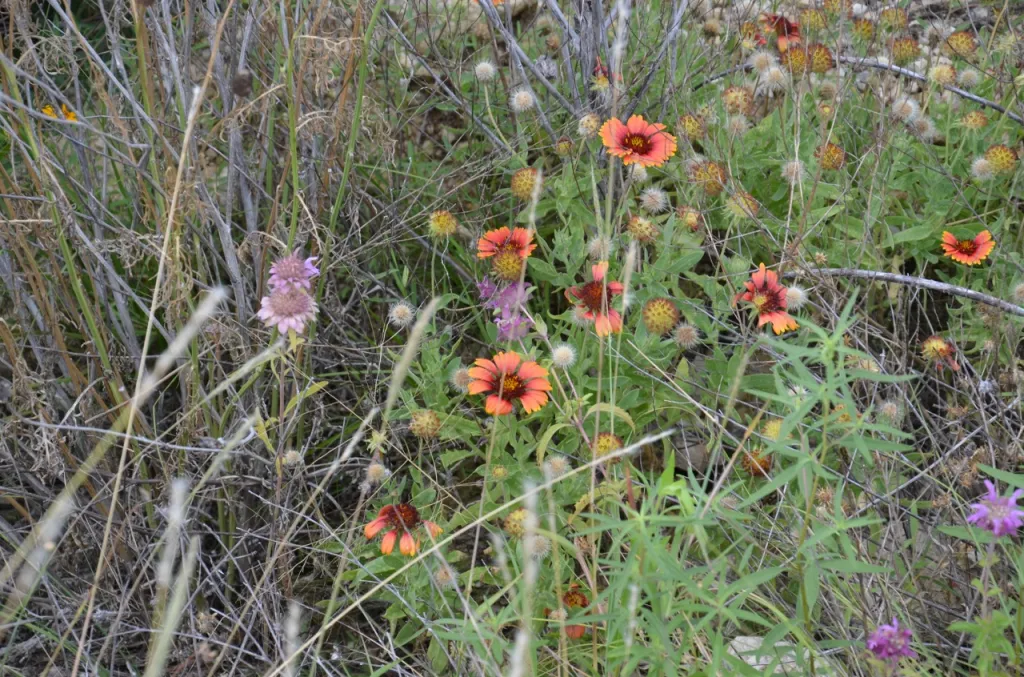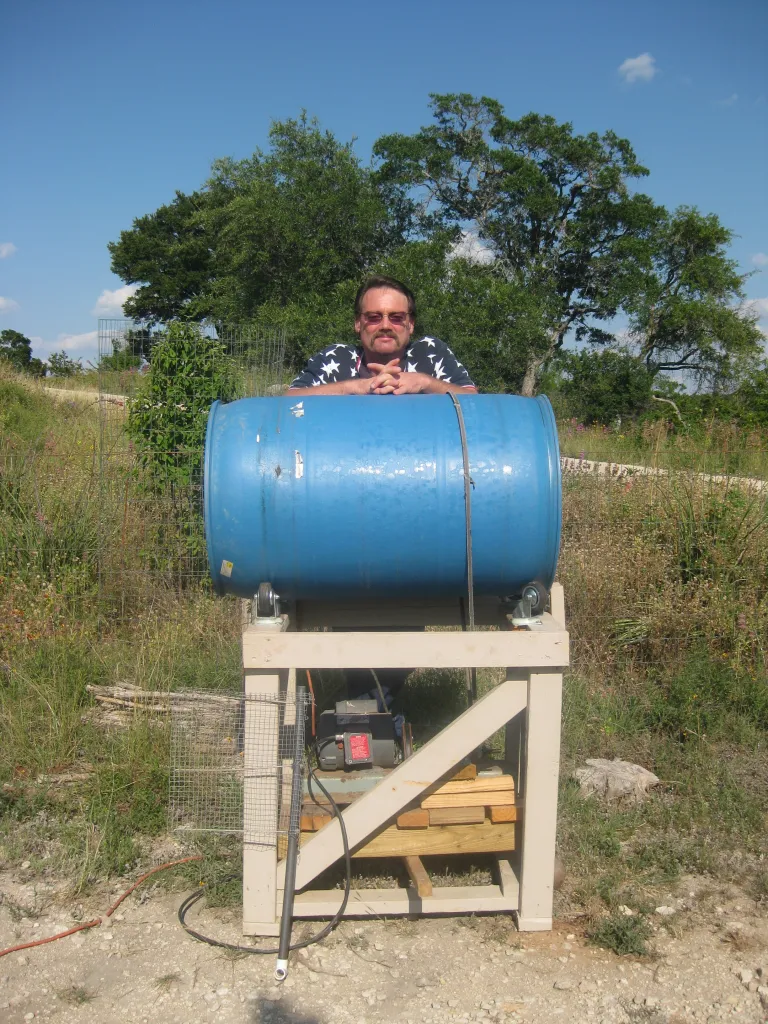By Emily Weiner
On June 16th the Boerne Chapter of the Native Plant Society of Texas (NPSOT) entered a float in the Berges Fest parade. Hopefully, you were able to enjoy a nice view of the procession and, maybe, you were one of the 1000 or so people to receive one of the native seed balls handed out by our “butterflies” and other members. Now, you have this cool little package and you are likely wondering, “What the heck do I do with this?’”. Well, we hope you toss ‘em! Into your yard, that is.
Seed balls are an easy means of distributing a variety of seeds in what some refer to as “guerrilla gardening”. Simply put, clay, compost, seeds and water come together to form a perfect delivery system for reintroducing native plants to your yard, that vacant lot in the neighborhood, or even ditches and roadsides! The clay helps to protect the seeds from birds and other critters. Once rains break down the clay, the compost provides a bit of growing medium for the germinating seeds, allowing the plants to reach their full potential!

If you received one of our seed balls, some of the wildflowers you can expect to see include bluebonnets, Indian blanketflower, basketflower, blue curls, cowpen daisy, coreopsis, horsemint, mealy blue sage, and Drummond phlox, just to name a few. Native American Seed, located in Junction, provided us with a wonderful assortment of seed mixes, as did a number of our generous members that worked very hard harvesting seeds from the wildflowers growing in their own yards.
In an effort to encourage everyone to jump onboard the seed ball wagon, we included DIY instructions for making seed balls in the parade seed ball packages. But just in case you did not receive the instructions, the basic recipe is easy and perfect for keeping little hands busy, especially during the summer.
For our purposes, we used a 2-cup measure for the proportions, but unless you are planning on rolling several hundred seed balls (which, of course, we would encourage) you want to use a smaller amount. The basic recipe is:
- 1 part native seeds (wildflower or grass) [Native American Seed is a wonderful resource for native seeds and you can order online at www.seedsource.com. Of course, you can also harvest seed from your yard or public areas. A short walk along the Old No.9 trail or the new Currey Trail this time of year would yield a bounty of Indian Blanket (Gallardia pulchella) and horsemint (Monarda cirtiodora) seeds!]
- 2 parts fine compost
- 5 parts powdered Redart, or terracotta clay [The clay can be found at any clay supply shop. We purchased ours at Clayworld in San Antonio.]
- 1 part water
Mix the dry ingredients in a bucket with your hands. Slowly add water a little at a time, continuing to mix until mixture is sticky. Pinch off small pieces of the mixture and roll it between your palms until it holds together well and begins to set up, or harden. Place seed balls onto a tarp and allow them to dry 24 to 48 hours. Once dry, they are ready for broadcasting or short-term storage.

It is important to keep the seed balls on the small side (~1/2 inch in diameter). Too many seeds per ball can result in too much competition amongst the seeds for survival. Just as important is to distribute the seed balls at the right time of year. Rain is required for the clay to melt away and allow the seeds to germinate. For those of us in the beautiful, but often dry, Hill Country, this means sowing your seed balls during fall or winter will give them the best shot at receiving the rain they need.
You may wonder how long it takes to make a batch of seed balls. In our case, we needed to produce thousands. Now, that would have taken a long time by hand, but with a little research and a lot of trial and error, our organization’s President, Scott Barthel, and our Treasurer, Jim Latham, came up with a solution. His motor-driven seed ball maker greatly improved the efficiency of the process; enabling us to produce close to 800 seed balls per batch.
If you did not have an opportunity to snag a seed ball of your own, you still have a chance at the Fourth of July Parade in Comfort. We will be there handing out seed balls and encouraging the use of natives in your yards and landscapes. Hope to see you there!


